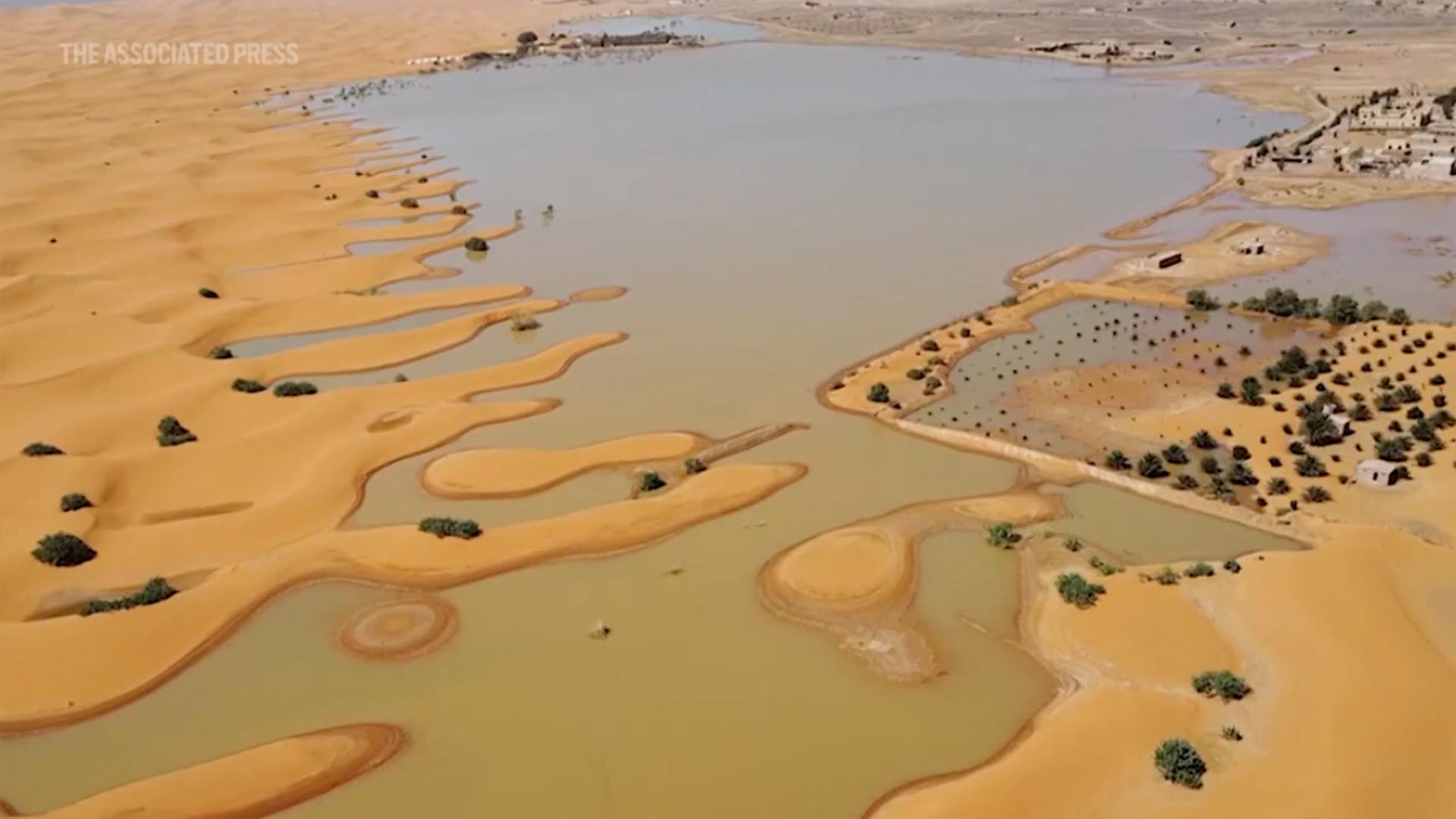Published
5 months agoon
By
Joe Pee
The Sahara Desert, one of the driest places on Earth, is known for its scorching heat and endless stretches of sand. But recently, this arid region experienced an unusual event—heavy rain. Parts of the Sahara in Morocco faced rare and severe flooding, a phenomenon that has shocked both locals and scientists. While rainfall in the Sahara is an extremely rare occurrence, climate change seems to be turning the extraordinary into the new norm.
The Sahara Desert, spanning over 9 million square kilometers across North Africa, typically receives less than 25 millimeters of rain per year. In some areas, it can go years without seeing any measurable rainfall at all. However, a deluge of rain recently swept across the Moroccan portion of the desert, leading to widespread floods.
Images and videos from the region show water rushing through sand dunes, turning the dry desert floor into a series of temporary rivers and lakes. This rainfall, while welcomed by some, has also brought significant disruption. Flash floods have damaged roads, homes, and infrastructure, causing challenges for those living in the affected areas. For locals, seeing the desert flooded is a once-in-a-lifetime sight, but the risks that come with it are serious.
While flooding in the Sahara may seem like a freak event, scientists are increasingly pointing to climate change as the culprit behind these rare weather patterns. As global temperatures rise, weather systems around the world are becoming more unpredictable and extreme. The Sahara, despite its desert climate, is not immune to these changes.
Rising temperatures have altered rainfall patterns, with some parts of the desert now seeing occasional bursts of rain that were previously unheard of. These downpours not only disrupt daily life but also pose long-term risks to the environment. The sudden flooding can erode landscapes, uproot vegetation, and damage ecosystems that have adapted to survive in dry, harsh conditions. Furthermore, flash floods in desert areas often lead to soil erosion, which can make the land even less fertile and more prone to future desertification.
For the people living in and around the Sahara, this sudden change in weather has been both a blessing and a curse. The water could bring temporary relief to areas that have been struggling with prolonged droughts, allowing for a brief moment of rejuvenation for crops and livestock. However, for many, the floods have brought devastation. Roads have been washed away, homes damaged, and transportation disrupted. The infrastructure in desert regions like these is often not equipped to handle such extreme weather events.
Beyond the immediate damage, there’s also concern about what these changes mean for the future. If heavy rainfall continues to become more frequent, desert communities may need to rethink their infrastructure and way of life. Preparing for floods in a place where rain is a rarity presents a new set of challenges for the Moroccan government and its people.
The unusual flooding in the Sahara is part of a larger global trend. As climate change accelerates, extreme weather events are becoming more common in areas that historically haven’t experienced them. From rare snowfalls in the Middle East to unprecedented heatwaves in Europe, the planet is witnessing shifts in its climate that were once thought impossible.
Heavy rain and flooding in a place like the Sahara highlight just how far-reaching the effects of climate change can be. What was once considered a dry, barren desert is now experiencing weather patterns that were previously unimaginable. This is a stark reminder that no part of the world is immune to the impacts of climate change.
The recent flooding in the Sahara Desert is a clear example of how climate change is reshaping the world’s most iconic landscapes. While the sight of water flowing through the desert may seem surreal, it serves as a warning of the unpredictable and often destructive power of climate change.
As weather patterns continue to shift, the global community must adapt and take action to mitigate the impact of climate change. For the people of Morocco and other regions near the Sahara, the hope is that this rare flooding event does not become a regular occurrence. But with the climate becoming increasingly unstable, it’s a future that seems all too possible.

























